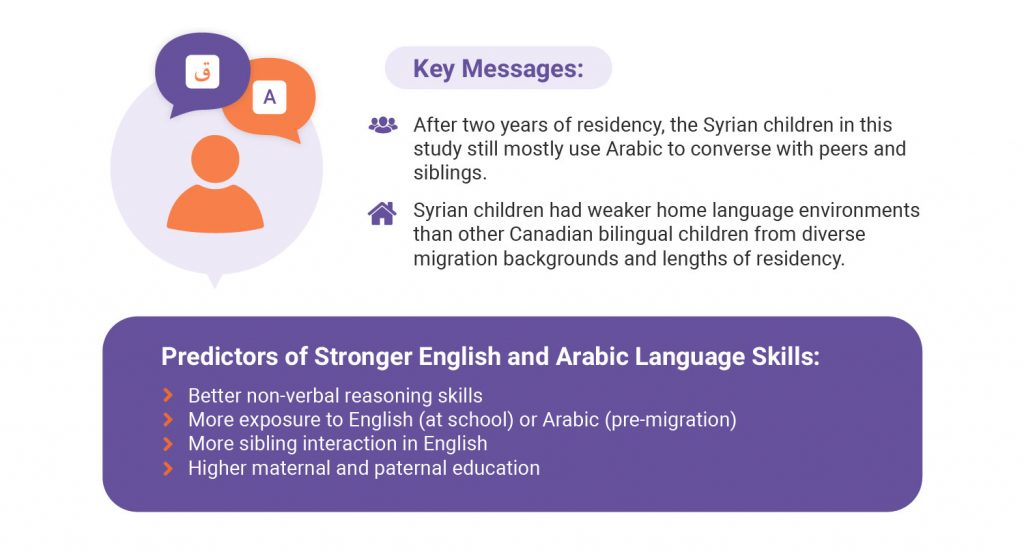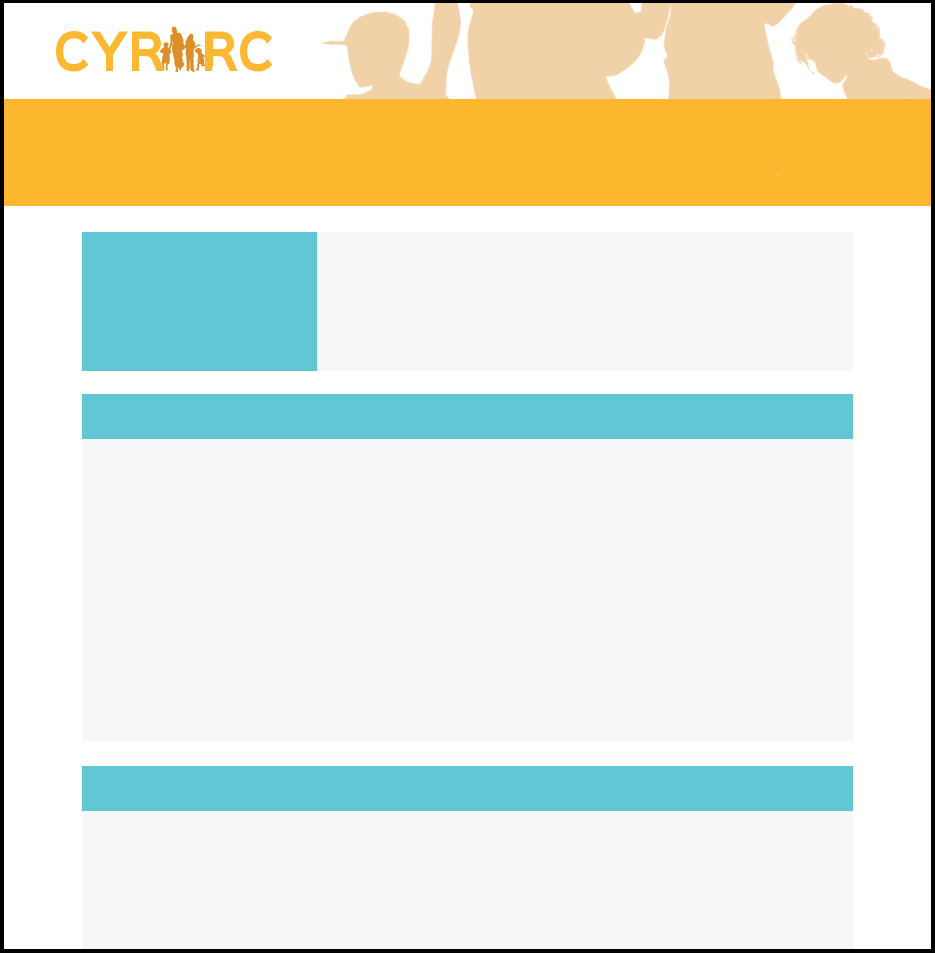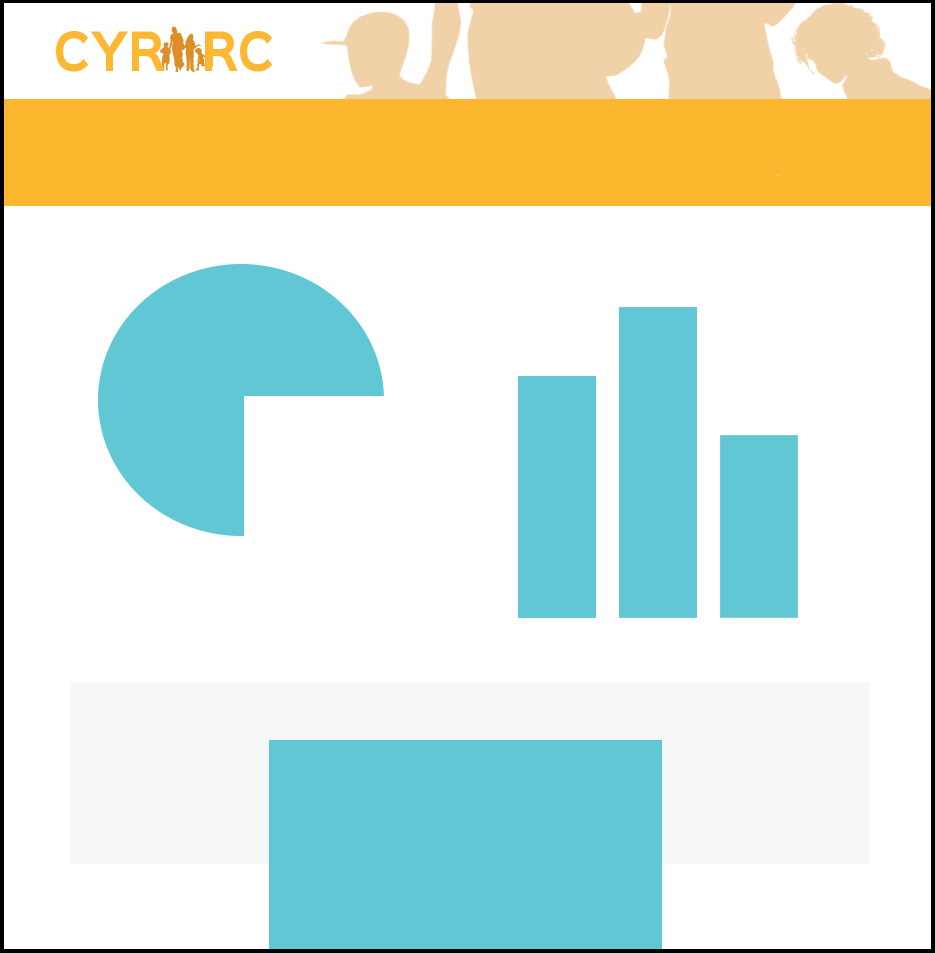Successes and Challenges of Children who are Syrian Refugees:
Language, Literacy, and Wellbeing
Researchers: Johanne Paradis1, Xi (Becky) Chen2, Alexandra Gottardo3, Adriana Soto-Corominas4, Redab Al-Janaideh2, Jennifer Jenkins2, Kathliki Georgiades5, Irene Vitroulis6, Mazen El-Baba7, Lisa Rochman8
Affiliations: University of Alberta1, OISE, University of Toronto2, Wilfred Laurier University3, Universitat Internacional de Catalunya4, McMaster University5, University of Ottawa6, H.appi7, NorQuest College8
Research Partners: NorQuest College and H.appi
Keywords: Refugee children and youth, bilingual language development, second language acquisition, heritage language acquisition, Edmonton, Toronto, Waterloo, English, Arabic, longitudinal study
Jump to: Full Infographic, Methodology, Publications & Reports
Summary
Objective: This study explored factors that contribute to the successes and challenges of Syrian refugee children’s language and literacy development in both their second language of English, and the heritage language of Arabic. This was a three-year longitudinal study, with research carried out at three sites: Edmonton, Toronto, and Waterloo. This study was also a collaboration with a CYRRC project from the Well-being cluster to explore the relationship between learning and well-being in Syrian refugee children.
Objective: To help establish best practices for second language learning of refugee children, taking into consideration how individual differences in socioemotional well-being contribute to refugee children’s language and literacy development.
Research Justification: To fully participate in Canadian society, refugee children need to achieve fluent language and literacy skills in English. At the same time, the maintenance of the first language, which in the context of this study is Arabic, is key to family and community relationships and may confer cognitive advantages associated with bilingualism.
Infographic Excerpt

Methodology:
Quantitative and qualitative measures were used to assess the bilingual and literacy development of Syrian refugee children (aged 6-13) over time. Data was collected, processed, and analyzed in 3 waves (one per year), with an initial year before data collection for research planning, determining measures and recruitment, and final year post data collection for data analysis and knowledge dissemination. Each data collection interval involved a parent interview, which gathered information on demographic, linguistic, and well-being factors, and the administration of 14 language and cognitive tests to the children in both English and in Arabic. In the final year, youth self-report was also collected on background factors and an acculturation questionnaire was administered.
Findings
- Children’s English grew steadily across all three time points. Their Arabic grew from Time 1 to Time 2 but began to show signs of attrition by Time 3.
- In general, stronger skills in the first language, Arabic, provided a better foundation for learning English. In other words, skills in one language did not take away from those in the other languages, instead they built on one another.
- Children’s skills in English and Arabic were variable, with family demographics, age of arrival, language experience, and well-being accounting for much of this variance.
- For example, older arrivals had stronger Arabic skills by Time 3 than younger arrivals.
- Children who interacted in English with their siblings had stronger English skills, but poorer Arabic skills.
- Children who had richer English experiences outside school developed English faster with stronger skills.
- Children whose mothers had higher levels of education pre-migration had stronger skills in both languages.
- Children with stronger cognitive skills in memory and analogical reasoning had stronger language skills in both languages.
- Finally, pre-migration adversity and difficulties with well-being had a negative effect on children's skills in both languages.
Recommendations
- Teachers and educators should increase their awareness of the multiple factors that contribute to challenges and successes in the bilingual development of refugee children as this could help teachers better understand why some children are developing their English faster and with better proficiency than others.
- The study suggests that children who have lower richness in their language experiences outside school, have mothers with lower levels of education, and who have well-being difficulties, should receive extra support at school in order to ensure success in their bilingual development.
Publications & Reports
Publication
Paradis, J., Soto-Corominas, A. Daskalaki, E., Chen, B., Gottardo, A. (2021). Morphosyntactic development in first generation Arabic-English children: The effect of cognitive, age and input factors over time and across languages. Languages 6: 51, pp 1-31 doi.org/10.3390/languages6010051
Click to read >
Publication
Explore more projects


